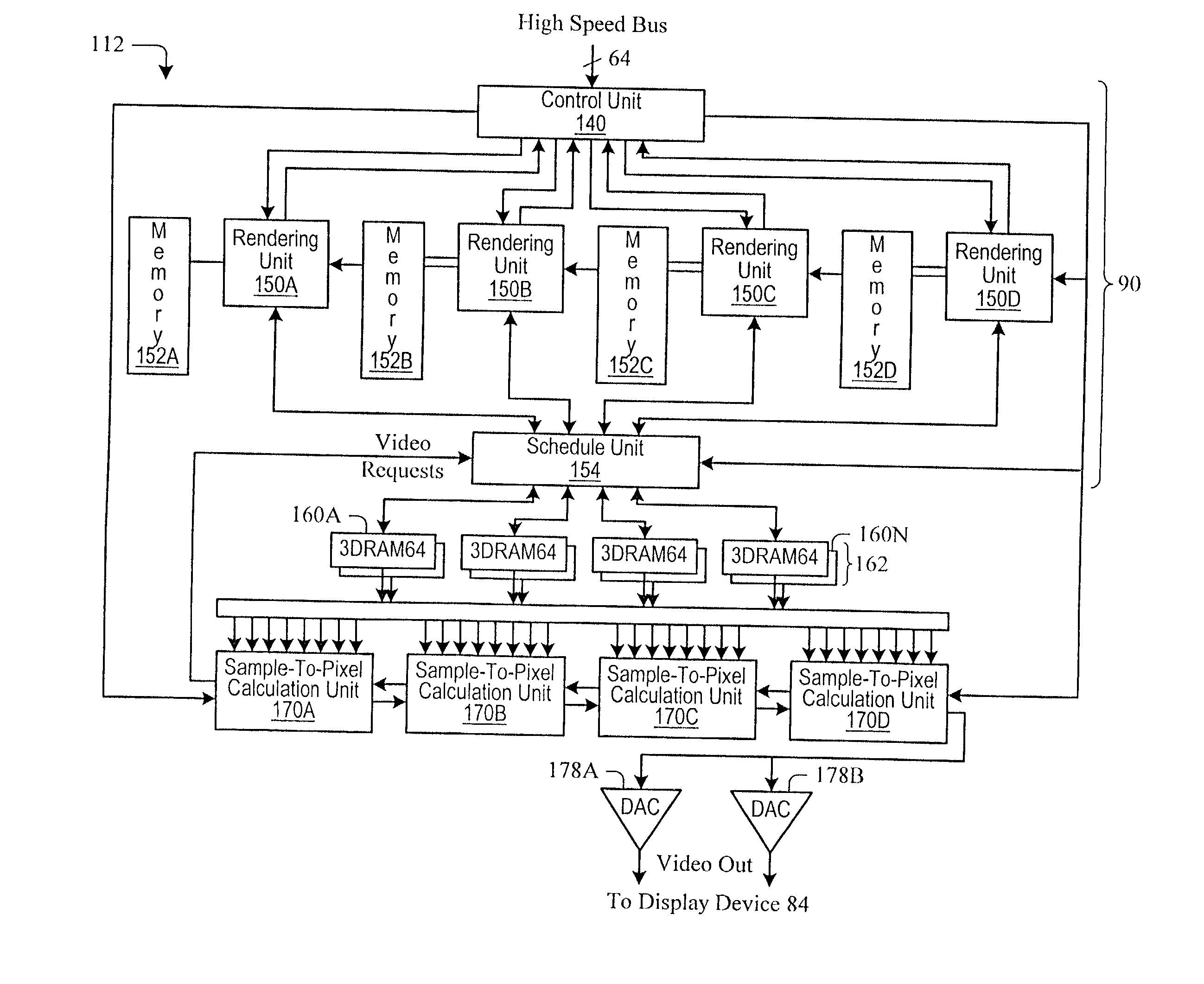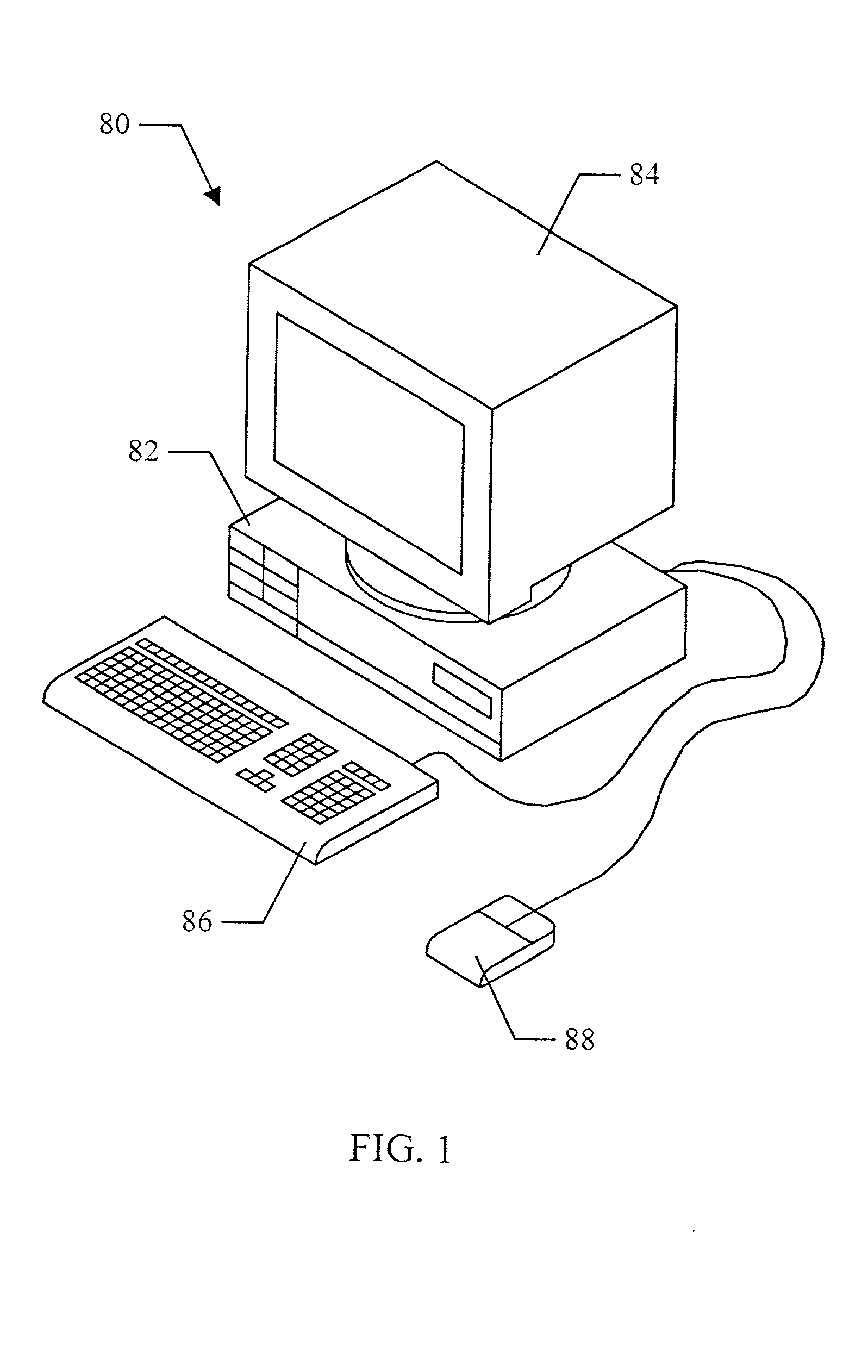Dynamically adjusting a sample-to-pixel filter in response to user input and/or sensor input
a filter and sample-to-pixel technology, applied in the field of computer graphics, can solve the problems of increasing the complexity of the image displayed, the complexity of the image, and the complexity of the data being sent to the display devi
- Summary
- Abstract
- Description
- Claims
- Application Information
AI Technical Summary
Problems solved by technology
Method used
Image
Examples
Embodiment Construction
Computer System--FIG. 1
[0076] FIG. 1 shows one embodiment of a computer system 80 that includes a three-dimensional (3-D) graphics system. The computer system may be comprised in any of various systems, including a traditional PC, network PC, Internet appliance, a television, including HDTV systems and interactive television systems, set top boxes, game console, personal digital assistants (PDAs), and other devices which display 2D and or 3D graphics, among others.
[0077] As shown, the computer system 80 comprises a system unit 82 and a video monitor or display device 84 coupled to the system unit 82. The display device 84 may be any of various types of display monitors or devices (e.g., a CRT, LCD, or gas-plasma display). Various input devices may be connected to the computer system, including a keyboard 86 and / or a mouse 88, or other input device (e.g., a trackball, digitizer, tablet, six-degree of freedom input device, head tracker, eye tracker, data glove, body sensors, etc.). Ap...
PUM
 Login to View More
Login to View More Abstract
Description
Claims
Application Information
 Login to View More
Login to View More - R&D
- Intellectual Property
- Life Sciences
- Materials
- Tech Scout
- Unparalleled Data Quality
- Higher Quality Content
- 60% Fewer Hallucinations
Browse by: Latest US Patents, China's latest patents, Technical Efficacy Thesaurus, Application Domain, Technology Topic, Popular Technical Reports.
© 2025 PatSnap. All rights reserved.Legal|Privacy policy|Modern Slavery Act Transparency Statement|Sitemap|About US| Contact US: help@patsnap.com



